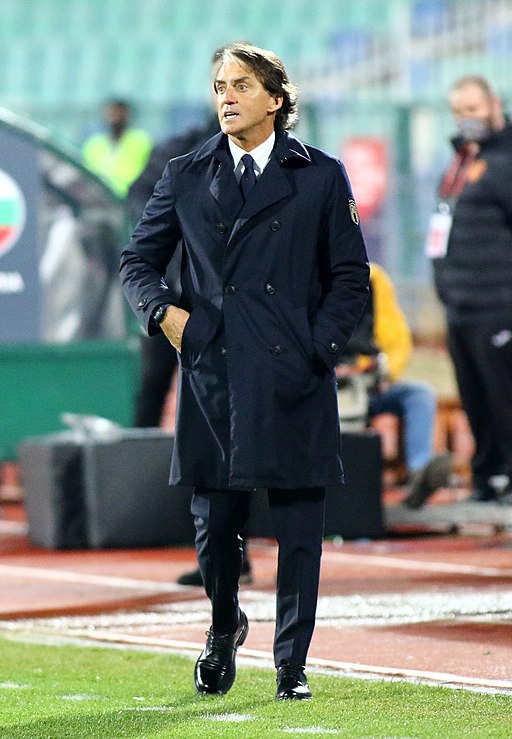
“Roberto mancini in 2021” by Biser Todorov is licensed under CC BY 4.0.
“It’s football. Football, football, football. I don’t think he has any other interest in life.” That’s Sven-Göran Eriksson describing Roberto Mancini in the podcast ‘The Big Interview With Graham Hunter’.
Eriksson, who coached Mancini for 9 years — first at Sampdoria and then at Lazio – must know what he was talking about. However, if Roberto Mancini had not become a footballer, one suspects he would’ve become a firefighter. Or an emergency doctor. Maybe a paramedic. Because crisis management is what Mancini seems to excel in. He is at his most formidable when the odds look fearsome and the cause seems impossible.
A RECORD OF ACHIEVING THE IMPROBABLE
Mancini’s first managerial job lasted just over 10 months. During that time, the 36-year-old took charge of a Fiorentina side in crippling financial difficulty and led them to a Coppa Italia triumph. The cup won in 2001 remains Fiorentina’s last silverware to date.
In May 2002, Mancini took over another club in a financial hole – Lazio. Despite Lazio selling stars such as Alessandro Nesta and Hernán Crespo that summer, Mancini led the Biancocelesti to a fourth place finish and the semifinals of the UEFA Cup (now known as the Europa League). Almost 20 years on, Lazio are yet to enjoy a longer run in Europe.
In 2018, Mancini got the toughest job remit in his managerial career till then – to rejuvenate the Azzurri after they failed to qualify for the 2018 FIFA World Cup.
In 2018, Mancini got the toughest job remit in his managerial career till then – to rejuvenate Italy after the Azzurri failed to qualify for the FIFA World Cup for the first time in 60 years.
“I first set foot in Coverciano (the Italian Football Federation’s Florence headquarters) in 1978. To come back as head coach is special,” said Mancini at his unveiling as Italy coach.
“I want to be the head coach who brings Italy back to where we belong in Europe and in the world.… Our task will be to make Italy close to the fans again through our play and results.”
Over 3 painstaking years, Mancini revitalised the Azzurri, making their style of play more attacking and blooding in fresh blood alongside old hands. Victory at Euro 2020 showed he may have arrived at the perfect alchemy: a band of brothers low on celebrity wattage, but more than the sum of its parts, and who could beat anyone on their day.
The bad old days of 2017 seemed an aberration, when Italy had failed to qualify for the World Cup under 71-year-old Gian Piero Ventura.
Then it happened again.
4 MORE YEARS IN THE WILDERNESS
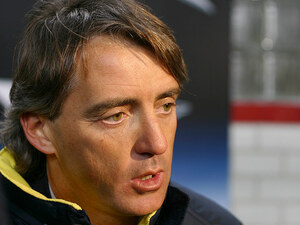
Mancini waited 3 whole days after Italy lost in the 2022 World Cup playoffs to North Macedonia before announcing his decision.
“We need to start again,” he said.
“I talked to the president (of the Italian Football Federation), we’re in agreement on everything … we’ll have time to discuss what we need to improve.
“I’m still young and I wanted to win a European Championship and a World Cup, we’ll have to wait for the second a little bit.
“We have important matches coming up,” Mancini said. “We will certainly introduce younger players already in June for the Nations League. I hope they will get experience in their club. That’s fundamental.”
Almost 1 year since his promise to introduce new players to the Italy team, Mancini kept his word this summer.
In Italy’s first match of the summer, the Finalissima, a bout between the continental champions of Europe and South America, Mancini retained most of the Azzurri players who had won the European Championship last year.
“This was a match they earned by winning the European Championship,” the Italy boss said about sticking with the old guard for the match.
However, Italy’s performance in a 0-3 defeat to Argentina was so ghastly, their failure to qualify for the 2022 World Cup finals suddenly made sense.
“Oh, I was an ugly kid,” American comedian Rodney Dangerfield once said.
“My old man took me to the zoo. They thanked him for returning me.”
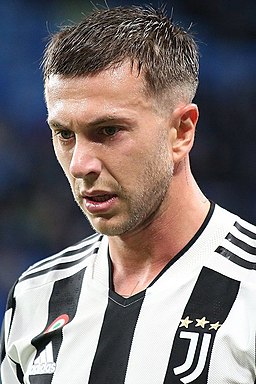
In a rather similar vein, 9 Italy players were sent home by Mancini in the immediate aftermath of the defeat to Argentina. They were Giorgio Chiellini (who retired), Federico Bernardeschi, Emerson Palmieri, Lorenzo Insigne, Jorginho, Marco Verratti, Manuel Lazzari, Mattia Zaccagni and Salvatore Sirigu. Verratti and Insigne had already missed the Finalissima against Argentina due to injury.
When Italy took the field on June 5 – three days after the Finalissima – against Germany in the first match of their new UEFA Nations League cycle, only Gianluigi Donnarumma kept his place in the playing 11.
The starting 11 against Germany had an average cap count of 18. Six of the 11 had fewer than 15 caps, including Davide Frattesi of Sassuolo, who was making his debut.
Few gave Italy a prayer against Germany, but they ended up getting a point against the 4-time World Champions. When Italy played Germany again a couple of weeks later, hopes were high that the Azzurri may repeat the trick in Monchengladbach, where the match was held, but were instead thrashed 2-5.
Despite the result, however, there were several useful learnings for Italy to take from their Nations League matches this summer. They are:
1) PELLGRINI COULD BE NEW INSIGNE
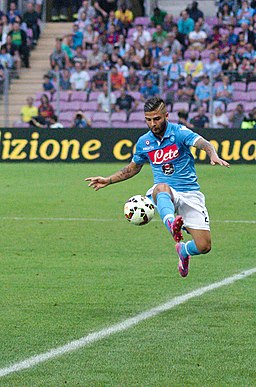
Lorenzo Pellegrini was one of the biggest takeaways for Italy from their Nations League matches this summer. Pellegrini started 3 out of the 4 matches the Azzurri played as part of their campaign, playing in Lorenzo Insigne’s favoured position as a left-sided forward in 2 of them. The Roma captain played as a left-sided midfielder in his other match. The 26-year-old midfielder, who led Roma to the UEFA Conference League title this season, impressed with his inventiveness as well as a willingness to do defensive work.
Pellegrini scored a goal each in the matches against Germany and Hungary before impressing in the goalless draw against England.
“Pellegrini has his own style of football, he’s not a 10 like Giuseppe Giannini, nor a 10 like Francesco Totti,” said Mancini after Italy’s 0-0 draw with England, talking about 2 legendary playmakers who had played for Roma and Italy.
“I think Pellegrini can become much better with time, because he is so good at both attacking and defending. At times he loses balls he shouldn’t, but if he improves that and a couple of other things, he can become simply extraordinary.”
Ever since Insigne’s dramatic loss of form for Italy in the recent past – and his move to Toronto FC, a footballing outpost likely to doom his international career – there have been concerns over who will take over the Number 10 shirt usually worn by Insigne for the Azzurri.
Wearing the Azzurri Number 10, the Roma captain was often a step ahead of others on the pitch, spotting goal scoring chances where others saw none and setting up teammates.
Pellegrini is already a candidate to inherit another legendary Number 10 jersey – that of Totti at Roma. Totti’s jersey was retired by his club when the Roman icon bid farewell to football in 2017.
“Pellegrini is a player that we value as an offensive mezzala. He’s one of the several options at our disposal,” said Mancini about the Roma captain in March this year.
A mezzala is, according to Football Manager, “a central player that likes to drift wide, essentially a central/half-winger.”
While Pellegrini did play as a mezzala against Hungary, he impressed more when playing as a left-sided forward against Germany and England.
Wearing the Azzurri Number 10, the Roma captain was often a step ahead of others on the pitch, spotting goal scoring chances where others saw none and setting up teammates. Nobody directly scored from these chances, but that was proof of Italy’s poor finishing, not Pellegrini’s passing.
On the evidence of his showing in 3 matches for Italy this summer, Pellegrini has made the role of left-sided forward his own. Insigne has to regain form and turn in exceptional performances in Major League Soccer to retain his place in the Italy squad, despite Mancini’s assurances that the former Napoli captain will remain important to Italy.
Giacomo Raspadori is only 22 and showed flashes of potential in a left-sided role this summer, but his link-up play needs improvement.
Pellegrini is only 26 years old, and if he keeps up his form with Roma and Italy, Mancini will have one less problem to worry about.
2) MANCINI-BASTONI CAN BE NEW CHIELLINI-BONUCCI
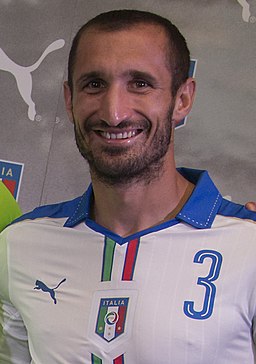
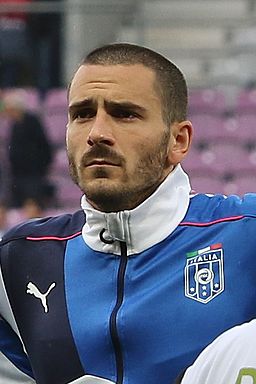
For over a decade, Italy were fortunate to have Giorgio Chiellini and Leonardo Bonucci, clubmates and best friends, at the centre of their defence to shield the goal from opposition onslaughts. Not anymore. Chiellini has retired from international duty while Bonucci has diminished from the player he once was. His ball-playing ability is still there, and he can still whip out last-second tackles that will take your breath away, but pace has deserted him.
The Gianluca Mancini-Alessandro Bastoni partnership promises much. Mancini combines a physical style of defending with impressive ball-playing ability while Bastoni has first-rate positional sense. They’re both young, with Mancini 26 and Bastoni 23. They could form the bedrock of the national team’s backline in the mid- to long-term.
Players who could have been long-term alternatives look to be out of the running either due to stagnation in development (Alessio Romagnoli – Milan), injury issues (Mattia Caldara – Milan) or age (34-year-old Francesco Acerbi – Lazio).
Eighteen-year-old Giorgio Scalvini also impressed during his debut against Germany in Italy’s 2-5 defeat, though he was played by Mancini as a defensive midfielder. In the 45 minutes he was on the pitch, the teenager displayed fine positional sense and encouraging skills as a tackler.
While Bonucci would still be part of the Italy team in the short term, the Azzurri’s future at the back certainly seems to lie with Mancini and Bastoni.
3) WE’LL HAVE TO WAIT FOR ITALY’S NEXT TRUE-BLUE NUMBER 9
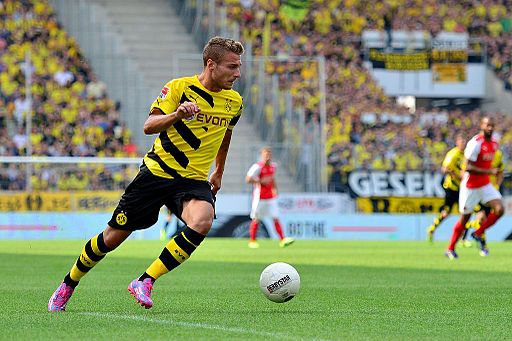
Eighteen-year-old Wilfried Gnonto was one of the key takeaways for Italy from their summer of Nations League football. The teenager’s acceleration, rugged physical frame, ability to beat defenders and an inclination to work hard for the team were all unexpected positives for the Azzurri. Gnonto even got his debut goal for Italy in their 2-5 defeat to Germany. But he remains a work in progress.
Gianluca Scamacca and Giacomo Raspadori, the candidates most expected to succeed Ciro Immobile as the Azzurri’s Number 9, had a mixed showing this summer. Scamacca did better of the two, complementing the team’s offensive play in any way he could. Raspadori showed glimpses of his quality with his link-up play but failed to catch the eye otherwise.
The key towards spotting Immobile’s successor will be, as Mancini pointed out after Italy lost the World Cup playoff against North Macedonia, young Italian prospects getting game time at their clubs.
Neither striker scored for Italy and the Sassuolo duo has to work on being in better positions to convert the chances that are created for them from the flanks. Much too often this summer, Scamacca and Raspadori were caught well short of where they should have been when an inviting pass was played inside the box.
Mancini has indicated that he would not be jettisoning Immobile altogether in the future despite his abysmal goalscoring record with Italy (15 goals from 55 games). The key towards spotting Immobile’s successor will be, as Mancini pointed out after Italy lost the World Cup playoff against North Macedonia, young Italian prospects getting game time at their clubs.
“We’ll have a chance to add younger players who, we hope, will have more chances with their clubs. This is crucial. There are many young players who can have the ambition to play with Italy and with a bright future ahead,” the Azzurri boss had said.
4) POLITANO IS A VIABLE ALTERNATIVE TO CHIESA
Federico Chiesa will doubtless take his place at the right of Italy’s 3-man attack when he returns from his anterior cruciate ligament injury that ended his season in January this year. Domenico Berardi of Sassuolo and Nicolo Zaniolo of Roma will also be vying for a spot after successful seasons with their respective clubs this year.
Thanks to his striking performances down Italy’s right wing this summer, Matteo Politano has also added himself to the mix. The 28-year-old Napoli player won only his second cap in 3 years when he started against Germany on June 4. He kept his place for the match against Hungary and rewarded Mancini’s faith in him with an assist.
Politano can beat defenders with his pace and dribbling and his crosses from the right were crucial to Italy’s attacking thrust in their matches this June.
5) LOCATELLI EDGES PAST TONALI IN RACE FOR MIDFIELD BERTH
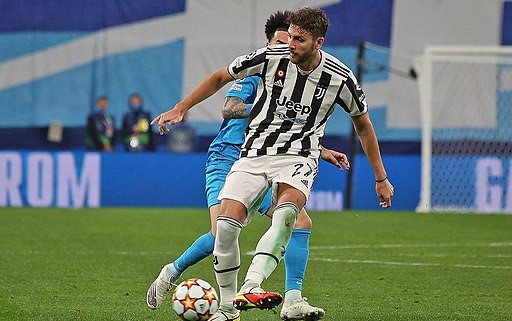
Italy won Euro 2020 with the esteemed midfield trio of Marco Verratti, Nicolo Barella and Jorginho. While Barella is 25 and very much part of the future of Italy, Verratti at 29 continues to be one of the best midfielders in the world. At 30, Jorginho is the eldest of the three and despite his third place finish in the Ballon d’Or 2021, there have been calls from some quarters for Mancini to start planning for a future without the Chelsea midfielder. If Mancini does so, Manuel Locatelli and Sandro Tonali are the most obvious candidates to take Jorginho’s place.
Locatelli played 2 matches for Italy (starting 1) while Tonali played 3 (and started 2) for the Azzurri this summer.
In comparison, Locatelli was more involved in the team’s play than Tonali was, who you suspect is yet to acclimatise to international football. Tonali had a breakout campaign domestically for Milan in 2021-22, helping the Rossoneri win their first Scudetto in 11 years. Locatelli was one of the few bright spots in a disappointing Juventus season in which they finished far off the top two in Serie A.
Italy will complete their Nations League fixtures in September, when they will first host England and then travel to Hungary for the final match of their group.
Locatelli is 24 years old and Tonali is 22. Going forward, the duo will continue to be two of Italy’s most important midfielders in the next few major tournaments. At the moment however, Locatelli has nosed past Tonali for a spot in the national team.
Italy will complete their Nations League fixtures in September, when they will first host England and then travel to Hungary for the final match of their group. Italy are currently third in the standings, behind Hungary and Germany and ahead of England. Few expect the Azzurri to top the group.
“I feel far more positive today than I was after the draw with England or that 1-1 with Germany in Bologna, because I saw something in terms of our football, the tactical system,” said Mancini after Italy’s 2-5 defeat to Germany.
“We understood some important things. We learned we can defend with three at the back, there are other systems compared to the 4-3-3, there are players who we can introduce and we will get back to being a team that comes to Germany not to be dominated, but to take control and dictate the tempo.”
Writing on his Twitter handle a little later, the Azzurri boss warned, “What we started a few weeks ago is a new process that will see some good things and others not so good.
“We need to still grow in terms of confidence, but we’ll do it all together as a real squad. Forza Azzurri.”
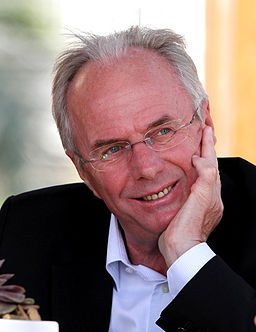
Considering Italy’s form in the lead-up to their defeat to North Macedonia and to Argentina in the Finalissima, few could have envisaged the Azzurri to take 5 points from 4 matches this summer in a group that included Germany, England and a well-organised Hungary.
When Italy host England at the San Siro on September 23, there is no doubt they will try to win the match and be in contention to top the group when the Azzurri travel to Hungary on September 26 for their final group match.
As Sven-Göran Eriksson said, “There are no half measures with Mancini. He is all or nothing.”
“When he goes to training, he is all,” said the Swede to Stats Perform before Italy took on Belgium in the quarterfinals of Euro 2020.
“When he changes clubs, like when he came with me from Sampdoria to Lazio, he was the same at Lazio. He was giving everything, and he wanted to win at any cost. He has a winning mind, a very winning one.”
Italy will need it.
